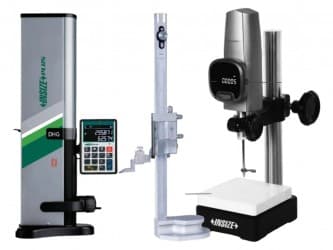Roughness Testers
Roughness testers, also known as surface
roughness testers or profilometers, are instruments used to measure and
quantify the surface texture or roughness of an object. They are widely used in
industries such as manufacturing, engineering, quality control, and research
and development. Roughness testers provide valuable information about the
quality, functionality, and performance of a surface finish. Here's an overview
of roughness testers:
1. Measurement Principles: Roughness testers use different measurement
principles to assess the surface roughness. The most common method is
stylus-based measurement, where a fine stylus is passed over the surface, and
the vertical movements of the stylus are recorded. Other methods include
optical measurement using laser or light scattering, confocal microscopy, and
atomic force microscopy (AFM).
2. Parameters Measured: Roughness testers provide various parameters to
describe the surface roughness characteristics. The most commonly used
parameter is Ra (arithmetical mean deviation of the assessed profile), which
represents the average roughness of the surface. Other parameters include Rz
(average maximum height), Rt (total height variation), Rq (root mean square
roughness), and many more. These parameters provide quantitative values that
characterize the surface texture at different scales.
3. Operation: In a stylus-based roughness tester, a stylus is placed on the
surface, and it moves along a defined path, tracing the contour of the surface.
The vertical movements of the stylus are detected and recorded by a transducer.
The recorded data is then analyzed to calculate the desired roughness
parameters. In optical or non-contact roughness testers, a laser or light
source scans the surface, and the reflected light or scattered pattern is
analyzed to determine the surface roughness.
4. Display and Analysis: Roughness testers typically have a digital display
that shows the measured roughness parameters. Some advanced models offer
graphical representations of the surface profile and allow for further analysis
and data processing. The instruments may have built-in software or be connected
to a computer for more comprehensive data analysis and reporting.
5. Applications: Roughness testers are used in a wide range of applications,
including quality control of machined parts, evaluation of surface coatings and
treatments, assessment of product finish, research and development of new
materials, and comparison of surface finishes against specified standards. They
are particularly useful in industries where surface texture plays a critical
role in functionality, such as automotive, aerospace, medical devices, and
precision engineering.
Roughness testers provide valuable insights into the
surface quality and performance of various materials and components. They help
ensure that the desired surface finish is achieved and maintained, contributing
to product quality, reliability, and customer satisfaction.





